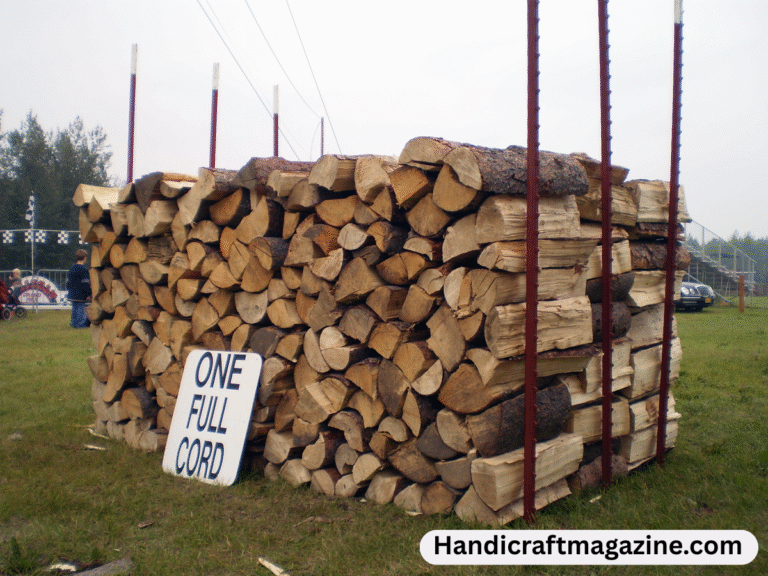Introduction
If you’ve ever purchased firewood, you’ve probably heard the term “cord of wood.” But how much is a cord of wood really worth, and what exactly does it mean? Understanding this measurement is crucial whether you’re stocking up for winter, working on a woodworking project, or simply curious about wood-buying standards.
In this article, we’ll break down what a cord of wood is, the factors that influence its price, and how you can make the most of your purchase. You’ll also learn tips for storing and customizing your wood for home or craft use, making it both functional and beautiful.
Understanding What a Cord of Wood Is
A cord of wood is a standardized measurement used in the lumber and firewood industry. It refers to a stack of wood measuring 4 feet high, 4 feet wide, and 8 feet long, totaling 128 cubic feet. This measurement ensures buyers know exactly how much wood they are paying for.
For smaller needs, sellers may offer fractional sizes, such as a half-cord or face cord. These are common for homeowners who don’t need the full quantity or lack storage space.
Factors That Affect the Price of a Cord of Wood
Type of Wood
Hardwoods like oak, maple, and hickory are denser, burn longer, and cost more than softwoods such as pine or spruce. The type of wood you choose will directly influence the price.
Season and Demand
Prices can vary dramatically depending on the season. In colder months, demand rises, which can push prices higher. Buying during the warmer months can often save you money.
Location and Delivery
Where you live plays a big role. Rural areas with abundant wood supply usually have lower prices, while urban locations may see higher rates. Delivery fees can also add to the total cost, especially if the supplier is far from your home.
Average Cost of a Cord of Wood
On average, a cord of seasoned hardwood can cost anywhere from $150 to $400 in the United States, depending on the factors above. Softwoods may range from $120 to $250 per cord. Keep in mind that prices fluctuate annually due to market conditions, fuel costs, and environmental regulations.
How to Customize Wood for Home Use
If you’re purchasing wood for more than just heating, customizing it can add value to your project.
Sanding and Finishing
Use a sander to smooth the surface for furniture or decorative projects. Applying a wood stain or sealant enhances durability and appearance.
Cutting and Shaping
A table saw or chainsaw allows you to cut wood to specific dimensions for crafts, shelves, or DIY home improvements. Always follow safety guidelines when cutting.
Storing Your Cord of Wood Properly
Proper storage ensures that your investment lasts and maintains its quality. Stack the wood off the ground using pallets or racks, and keep it covered with a breathable tarp to protect it from rain while allowing airflow to prevent mold.
FAQ
How much does a cord of wood cost?
The cost of a cord of wood depends on location, season, and wood type. Prices often range from $150 to $500.
What are the dimensions of a cord of wood?
A standard cord of wood measures 4 feet high, 4 feet deep, and 8 feet long, totaling 128 cubic feet.
How many feet are in a cord of wood?
A cord of wood is 8 feet long, 4 feet high, and 4 feet deep when stacked properly.
How is a cord of wood measured?
A cord is measured by stacking logs tightly to reach 128 cubic feet of volume.
What is a quarter cord of wood?
A quarter cord of wood equals one-fourth of a full cord, about 32 cubic feet in total volume.
What is the price of a cord of wood?
The price varies based on delivery, cutting, and splitting, but generally falls between $150 and $500.
How long will a cord of wood last for heating?
For an average household using wood as a primary heat source, a cord may last between 6 to 10 weeks, depending on stove efficiency and climate.
Can I buy half a cord of wood instead of a full cord?
Yes. Many suppliers offer smaller quantities like half-cords or face cords, making it more convenient for storage and budget purposes.
Conclusion
A cord of wood is more than just a stack of logs—it’s a standardized, measurable unit that helps buyers get fair value. By understanding its size, cost factors, and customization options, you can make smarter buying decisions, whether for heating your home or creating handcrafted pieces.
